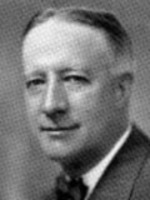 |
[Blog Home Page] |
| Chronicler's Minutiae | |||||||||
|
The Candidates' Election Day - 1928 Posted September 19, 2020 at 01:55pm by Chronicler === Election of 11/6/1928 === The presidential election of 1928 was the first to have a significant break in the Solid South since 1876. Herbert Hoover, the Republican nominee and renowned humanitarian, was the leader of the moderate Republicans. Alfred E. Smith, Governor of New York, was the Democratic nominee. Some Southern Democrats didn't approve of having Smith, a Catholic who opposed prohibition, leading their ticket. Hoover pointed out the irony that although some Democrats chose not to support the first Catholic nominee, had he not been the candidate, Hoover as the first Quaker nominee would have faced a similar backlash. Norman M. Thomas ran his first Socialist Party campaign as the leader among the third parties.  Alfred E. Smith (Democratic) Al Smith ended his presidential campaign with his radio address the evening before the election. He arrived at the NBC radio studio in Carnegie Hall to give his address in the middle of Hoover's speech. After Smith completed his speech, he danced a jig as the radio band played (New York Daily News, 11/6/1928). As Al and Catherine Smith prepared to leave their suite in the Biltmore Hotel on election day, a group of 20 policemen came to escort them to the polling place. A crowd of 4,000 people stood outside to greet them. Their polling place was a stationery shop at 34 East 48th Street. When he arrived, Smith removed his gloves and mentioned that his hands were slightly swollen because of shaking so many hands. New York had a new voting machine, and both Al and Catherine Smith needed a poll worker to show them how to use it (Brooklyn Standard Union, 11/6/1928). After voting, they went to their suite in the Biltmore Hotel. It was Catherine Smith's birthday, and Al ordered a large birthday cake for her party in the afternoon (Brooklyn Daily Eagle, 11/7/1928). Election night in New York City was near hysterical. Thousands of people crowded the streets, creating roadblocks. Election news was projected onto the sides of buildings at Times Square, with hundreds of abandoned cars in the streets. New York City and Chicago both gave Smith large majorities, bringing hope to the Democrats (New York Daily News, 11/7/1928). The Smiths went to the 71st Regiment Armory to hear the returns at 9pm, and they arrived at the same time as FDR, who was the Democratic nominee for New York governor. The Democrats gathered there expected to win, and the gathering began as soon as the polls closed at 6 pm. Smith chewed a cigar as the returns arrived. He piled up a huge lead in New York City and won the earliest precincts to report in New Jersey and Tennessee. At 9:50pm, radio station WNYC declared Hoover the winner in a landslide. Smith stood to step outside, at which point those gathered applauded his campaign. At 10:30pm, Smith said that he was not quite ready to concede, although the press was universally projecting a Hoover landslide. John W. Davis visited with the Smiths at this point. At 12:45am, Smith issued a brief statement to the press along with a congratulatory telegram to Hoover and then went to bed for the night (Brooklyn Daily Eagle, 11/7/1928).  Herbert Hoover (Republican) The year 1928 brought the various strands of the life of the Great Humanitarian together for his presidential aspirations. As Secretary of Commerce, he had just completed an expansion of the network of airports across the nation to improve air mail service. He had also coordinated assistance to the victims of the Mississippi River flooding, managing the various aid organizations just as he had done in Europe following World War I. At the end of his active campaigning, Hoover stopped at Washington DC to see President Coolidge. They had a formal photograph in front of the White House, after which Hoover took a train to his home in Palo Alto, California (Kenosha News, 11/7/1928). Hoover gave his final radio address in California the evening before the election. Herbert and Lou Hoover spent the night in their house on the Stanford University campus; Lou Hoover had designed large portions of the house. Election day dawned a cloudy day, but the sun came out in the morning. Herbert and Lou Hoover drove to the polls in their convertible, and it was warm enough to drive with the top down. They cast their votes with their sons at 10:18 am on election day in precinct No. 2, with the polling booths in the Stanford Women's Club. A large gathering of students greeted him there. The Hoovers went into the anteroom to wait their turn in line, and when they stepped into the room where the polling booths were located, people already in the room applauded their arrival. The ballots in California that year were orange, which were placed in a large brown box when completed. Hoover shook hands with Professor Townsley for the still and movie cameras (Oakland [California] Tribune, 11/6/1928). Herbert and Lou then took a drive into the nearby hills (San Bernardino County Sun, 11/7/1928). The Hoovers' residence was prepared to receive election returns much as had taken place with earlier nominees. Large blackboards were installed in the living room to record the returns from each state. Lou Hoover held an evening reception for a group of invited guests from the Republican Party and from Palo Alto. One of them was David S. Jordan, president emeritus of Stanford, who sent for two students specializing in statistics to maintain the results on the blackboards (San Bernardino County Sun, 11/7/1928). The polls along the East coast began to close at 6 pm, the equivalent of 3 pm Pacific. These returns began to trickle in to the Hoover residence soon after 3:30 pm. These early returns came from Massachusetts, where increased Catholic turnout was turning the state Democratic. Smith also took an early lead in New York City that outweighed the rest of the state for hours. Turnout was increasing by around 24%, and while Smith was narrowing Davis's margins of 1924, for the most part his increased vote moved few states into the Democratic column. Someone had pieced together a film biography of Hoover that included highlights of his nomination acceptance speech and his campaign, and those gathered watched the film as incoming returns pointed to a historic landslide. Eventually, Hoover took the lead in New York State. The Republican nominee was particularly interested in the Southern states, as he had hoped to eliminate the traditional sectionalism in presidential elections. He took an early lead in Virginia, Texas, and Florida. At 7:15 pm, his assistants reported that AP had projected he had won 206 electoral votes, and when AP projected New York for him at 7:30, he had a 251-52 electoral vote lead, not including an additional 50 electoral votes in the Western states that were almost certainly behind Hoover. Alfred Smith's telegram conceding the race arrived, and the Hoover guests cheered and then sang America. The Palo Alto telegraph offices had their busiest night up to that point. They used large baskets to bring telegrams to the Hoover house; so many telegrams came in that they couldn't be opened and read quickly enough (San Francisco Examiner, 11/7/1928). As the Hoovers prepared to go outside to greet the crowd, one of his assistants estimated that he had passed 400 electoral votes (San Bernardino County Sun, 11/7/1928). Palo Alto prepared a major celebration for the Hoovers. A large crowd of students and well-wishers gathered outside the Hoovers' residence. A band played for the crowd, and the university brought the renowned John Philip Sousa to direct the band on the special night. Once Hoover had been declared the winner, airplanes flew overhead and dropped colorful streamers. Hoover walked onto a balcony to address the crowd, saying in part "I sincerely appreciate your welcome to me, and I appreciate it from the bottom of my heart." The crowd embarked on a protracted roar that was broken by Sousa and the band, playing the Star Spangled Banner. By this time, Hoover was exhausted and wanted to go to bed but felt he should continue with the outdoor festivities. Sousa led the band in "Auld Lang Syne," with both Hoover and the crowd joining in. Hoover was moved by the song, after which he and Lou returned inside and retired for the night (San Francisco Examiner, 11/7/1928). Around midnight, the chief of the Secret Service contacted the Hoovers to say that his Secret Service detail would begin the morning after the election. As the Hoovers arose the morning after the election, AP had projected all states and reported a 444-87 electoral vote lead for Hoover (which ended up being the exact result). Hoover had won the largest number of electoral votes in US history (San Francisco Examiner, 11/7/1928). Third Party Nominees Norman M. Thomas, the Socialist presidential nominee, was making the first of his five campaigns. He gave his final 30-minute radio address on the evening before the election at radio station WJZ, with the address carried over an 11-station network. Thomas stated in the address that although Hoover and Smith were both capable, it didn't matter which of them was elected because both represented the capitalistic system (Minneapolis Star-Tribune, 11/6/1928). Thomas voted in Manhattan on election day, and as he left he told a reporter that he didn't care who ended up winning the election (Brooklyn Daily Eagle, 11/6/1928). The day after the election, Thomas told an AP reporter that the election was a sign that the Democratic Party was about to disintegrate, to be replaced by the Socialist Party (Des Moines Tribune, 11/7/1928). William F. Varney, the Prohibition presidential nominee, suspended his campaign before the election and asked his supporters to vote for Hoover. The Prohibition Party's Presidential Electors in California had already abandoned the national ticket and endorsed Hoover. The day after the election Varney said that the Prohibition Party shouldn't have become a single issue party in the 1920s (Atlanta Constitution, 11/7/1928). Verne L. Reynolds, the Socialist Labor presidential nominee, had been chosen as a replacement nominee after the death of Frank Johns, who had been nominated at the national convention. Newspapers at the time of the election ignored Reynolds as well as William Z. Foster, the Communist presidential nominee. Frank E. Webb, the Farmer Labor presidential nominee, had closed his campaign early. He and his wife took a train from their home in San Francisco and arrived in Washington DC the weekend before the election. They stayed in the Carlton Hotel until election day (Washington Evening Star, 11/3/1928). Webb's name didn't appear on the ballot in California, so he was unable to vote for himself anyway.
|
. | |||||||